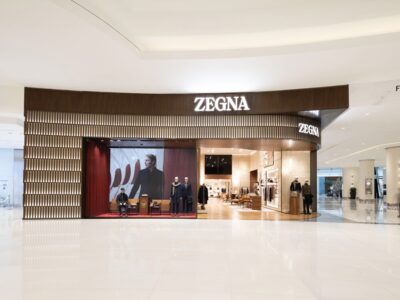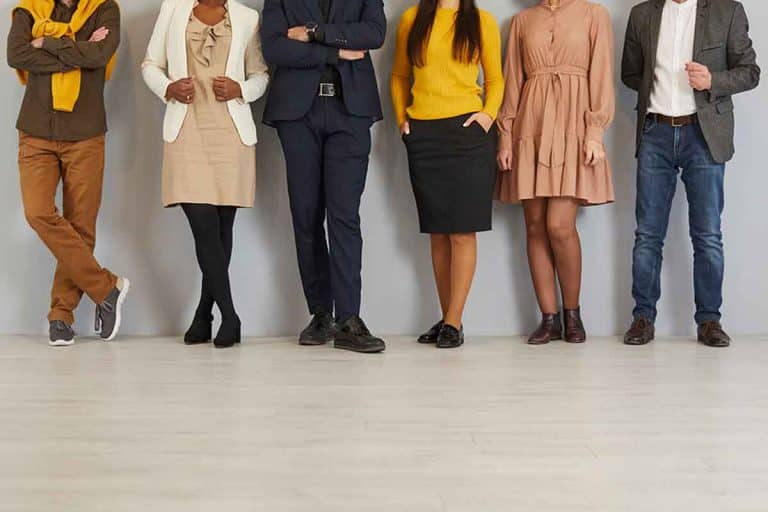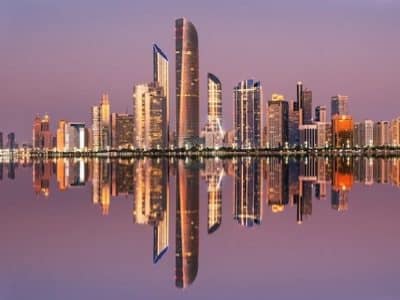As new generations emerge and more Gen Z individuals join the workforce, experts observe a clear shift in business dress codes. Sneakers and t-shirts are becoming increasingly common, while the prevalence of suits and ties is on the decline.
“Gone are the days of the restrictive 3-piece suit and tie being required to effectively conduct a business meeting,” Gary Sweeney, Brand Manager at Ascots & Chapels said in an exclusive interview with Arabian Business.
The blend between the old and the new becomes apparent as workers team up the t-shirt and sneaker duo with pants and blazers for meetings. “I think where companies face challenges, is through a lack of clear guidance on what is and isn’t appropriate. The term smart casual can be, unfortunately, left to the individual’s interpretation of what they deem appropriate. Being clear and even visual with corporate guidelines really helps,” Sweeney suggests.
Currently, there is a growing acceptance of a “smart casual” approach across diverse industries, including finance and law.
“I believe there has been a shift with millennials and Gen Z entering the workforce. They are now more educated on their own personal values, their beliefs and ethics than generations previous, and hold a mindset of being more about who you are as a person, then what you wear. However, I don’t believe that this necessarily means that the suit and tie is completely redundant,” Sweeney affirmed.
According to experts, one of the reasons that propelled the shifting dress code dynamic in the workplace is the pandemic. The rise of athleisure in fashion, coupled with the impact of the COVID-19 pandemic, has paved the acceptance of casual attire in both workplace and non-workplace settings.
‘Dress for the job you want, not the job you have’
“The phrase ‘dress for the job you want, not the job you have’ is very popular among etiquette coaches, and for good reason,” said Jamila Musayeva, International etiquette consultant.
Reflecting on the trajectory of fashion history, Musayeva highlights the evolution of norms since the 16th century. From the confines of historical etiquette to the contemporary embrace of unisex styles, minimalist fashion has transformed.
“The etiquette of fashion, in particular, has evolved dramatically – think about what was once taboo for women in fashion, such as wearing pants, which is now completely normalised. It’s a natural progression that our wardrobes would evolve and still down to certain essentials that remain relevant today. Many clothing items are also now unisex. Societal changes and historical developments continue to influence fashion trends,” she said.
Citing examples of global business leaders like Elon Musk, Mark Zuckerberg and Steve Jobs who have “simplified their wardrobes,” Musayeva said, “We see a trend towards simplicity, particularly in the US, which is gradually influencing other regions.”
In contrast to popular opinion, she believes that “The higher one’s rank, the simpler the attire tends to be since they are so wealthy and well respected that appearances are not a concern.”
The perception of credibility and authority varies across industries. While traditional business attire still commands respect in certain contexts, there’s a growing recognition that professionalism extends beyond clothing to encompass demeanour and expertise.
In addition, there is a regional factor at play when it comes to the acceptance and adoption of dress codes in a corporate setting.
“The approach to business attire varies significantly by region. For instance, Japan and China still have stricter dress codes, whereas the US and Canada are more relaxed. Interestingly, in places like Saudi Arabia, there’s a growing endorsement of cultural and national dresses over traditional business suits,” Musayeva explained.
“Globally, following dress codes remains more rigid in Asian countries and the Middle East. Your attire speaks volumes about your role and status. It remains crucial unless you are among the top 0.1% of people like Musk and Jobs,” she added.
However, since dressing is deeply personalised, it ultimately is a reflection of what a professional envisions as their image or that of the organisation as a whole.
“Ask yourself, if you are the MD of a private law firm, do you want one of your clients to meet one of your team in sweatpants and a T-shirt? Probably not. Denim for me, is another one which errs on the side of being too casual,” Sweeney said.
“I would say number one, consider the industry you are in, the clients that you serve and how you want your overall brand to be perceived,” he advised.

The physiological impact of what you wear
While acknowledging the benefits of a more casual dress code, Musayeva cautions against a laissez-faire attitude that could compromise professionalism in the workplace. She highlights the psychological impact of attire on mindset and self-perception, advising towards a balanced approach that fosters a productive and focused atmosphere.
For instance, with the widespread adoption of remote work globally, a trend known as ‘top half dressing’ has emerged. Workers often attend virtual meetings and calls dressed formally only on the parts visible to the camera.
Sweeney strongly rejects the idea, stating, “I don’t agree with this ‘Top half dressing’ at all. My personal belief is that, even if you are working from home, it is extremely important for you to get up, get showered and get dressed as if you were going out to work. Naturally, you will feel more confident, professional and good about yourself. During the pandemic, we saw many videos of men in shirts ties and tracksuit pants, or dare I say, worse!”
“One specific drawback of a more casual dress code is that it can lead to a similarly casual attitude in the workplace. What you wear can significantly influence your mindset and self-perception; for example, a power suit might make you feel more authoritative and confident,” Musayeva said.
While some industries and regions continue to uphold strict dress codes, the general trend points towards a balance between personal style and professional expectations. Ultimately, experts believe that attire should align with industry standards, company image, and personal branding, reinforcing the idea that professionalism extends beyond mere clothing.
“I believe the future of business fashion is going to be cyclical, similar to many trends in history. Currently, we’re moving towards increasingly casual attire, but like other trends, this is likely to shift over time. Just as we’ve seen with luxury – where an excess led to a return to understated, quiet luxury – we may see a similar trend with business attire,” Musayeva concluded.








